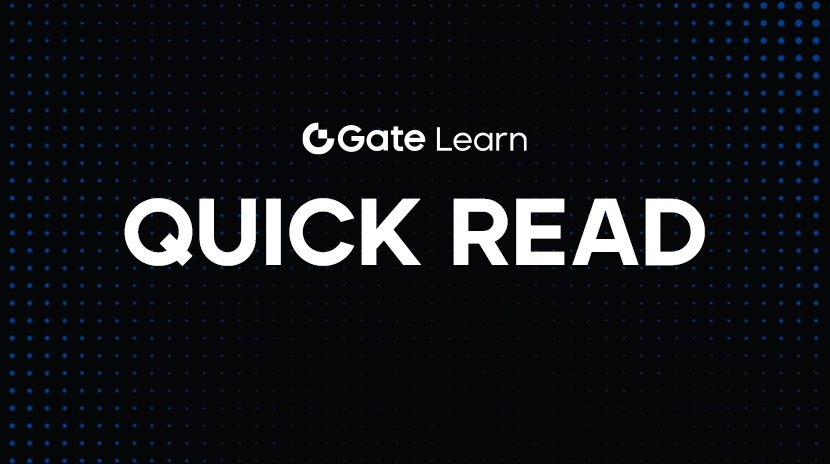Vì công nghệ blockchain là công cộng, Làm thế nào để bảo vệ danh tính của người dùng?
Giới thiệu
Công nghệ Blockchain, với những đặc điểm về phân quyền, không thể thay đổi, và minh bạch, đã gây ra những tác động biến đổi to lớn trên các ngành như tài chính, chuỗi cung ứng, và chăm sóc sức khỏe. Trong số đó, sự minh bạch là một trong những đặc điểm cốt lõi của blockchain, cho phép tất cả các bên tham gia xem hồ sơ giao dịch trên chuỗi và dữ liệu, từ đó đảm bảo tính đáng tin cậy và khả năng theo dõi. Tuy nhiên, trong thời đại mà dữ liệu được coi là tài sản quý giá, người dùng đang ngày càng quan tâm đến việc bảo vệ thông tin cá nhân của họ. Do đó, dưới tiền đề về sự minh bạch của blockchain, cách bảo vệ hiệu quả danh tính người dùng đã trở thành một vấn đề quan trọng cần giải quyết trong quá trình phát triển công nghệ này. Vấn đề này không chỉ liên quan đến quyền riêng tư và an ninh cá nhân mà còn quyết định xem blockchain có thể được áp dụng rộng rãi và tích hợp sâu vào các lĩnh vực khác nhau hay không.

Nguyên tắc của Công nghệ Blockchain
(1) Hệ thống Sổ cái Phân tán và Sự minh bạch
Ở cốt lõi của nó, blockchain là một công nghệ sổ cái phân tán ghi lại dữ liệu trong một loạt các khối, mỗi khối chứa thông tin giao dịch trong một khoảng thời gian cụ thể. Những khối này được kết nối theo thứ tự thời gian để tạo thành một chuỗi không thể thay đổi. Khác với các sổ cái tập trung truyền thống, sổ cái blockchain được phân tán trên nhiều nút trong mạng, với mỗi nút có một bản sao đầy đủ hoặc một phần của sổ cái. Điều này có nghĩa là khi dữ liệu được ghi lại trên blockchain, nó được phổ biến và lưu trữ rộng rãi, làm cho nó có thể truy cập và xác minh bởi tất cả các bên tham gia—đạt được tính minh bạch dữ liệu. Ví dụ, trong blockchain Bitcoin, tất cả các bản ghi giao dịch đều có thể nhìn thấy đối với mọi người dùng trên mạng, và bất kỳ ai cũng có thể sử dụng trình duyệt blockchain để xem lịch sử giao dịch của một địa chỉ cụ thể.

Nguồn hình ảnh:https://blog.csdn.net/weixin_43783865/article/details/84581344
(2) Cơ chế đồng thuận đảm bảo tính nhất quán của dữ liệu
Để đảm bảo tính nhất quán và độ chính xác của dữ liệu trên sổ cái phân tán, blockchain áp dụng các cơ chế đồng thuận khác nhau như Proof of Work (PoW), Proof of Stake (PoS), và Practical Byzantine Fault Tolerance (PBFT). Lấy Proof of Work làm ví dụ, các máy đào cạnh tranh để giải quyết các vấn đề toán học phức tạp, và máy đào đầu tiên tìm ra giải pháp sẽ có quyền tạo một block mới và phát sóng nó đến mạng lưới. Các nút khác xác nhận tính hợp lệ của block và sau đó thêm vào bản sao của họ trên sổ cái. Cơ chế này cho phép blockchain đạt được sự đồng thuận trên mạng lưới mà không cần can thiệp tập trung, từ đó củng cố tính minh bạch và đáng tin cậy của nó.
Cơ chế bảo vệ danh tính người dùng
(1) Ứng dụng Công nghệ Mã hóa
Thuật toán Mã hóa Phi đối xứng: Trong các hệ thống blockchain, danh tính người dùng thường được đại diện bởi một cặp khóa công khai và khóa riêng. Khóa công khai hoạt động giống như một địa chỉ công khai để nhận thông tin hoặc tài sản, trong khi khóa riêng được giữ an toàn bởi người dùng, tương tự như mật khẩu, và được sử dụng để ký các giao dịch và xác minh danh tính. Ví dụ, trong blockchain Ethereum, người dùng ký các giao dịch bằng khóa riêng của họ, tạo ra một chữ ký số bao gồm thông tin danh tính của người dùng và một băm của nội dung giao dịch. Các nút khác, sau khi nhận được giao dịch, sử dụng khóa công khai của người gửi để xác minh chữ ký. Nếu xác minh thành công, giao dịch được coi là xác thực và được khởi tạo bởi người giữ khóa riêng hợp pháp—đảm bảo tính xác thực và toàn vẹn của giao dịch mà không tiết lộ danh tính thực của người dùng.
Chức năng Băm: Chức năng Băm cũng rất quan trọng để bảo vệ danh tính người dùng trong blockchain. Chúng chuyển đổi dữ liệu có bất kỳ độ dài nào thành một giá trị băm cố định, duy nhất và không thể đảo ngược. Trong quá trình đăng ký người dùng hoặc giao dịch, hệ thống có thể băm thông tin danh tính (ví dụ, tên, số ID) và lưu trữ giá trị băm kết quả trên blockchain, thay vì dữ liệu gốc. Điều này có nghĩa là ngay cả khi dữ liệu blockchain có thể truy cập công khai, kẻ tấn công cũng không thể đảo ngược giá trị băm để khôi phục danh tính thật sự của người dùng.
(2) Giải quyết ẩn danh và giả danh
Giao Dịch Ẩn Danh: Một số dự án blockchain tập trung vào việc triển khai giao dịch ẩn danh để bảo vệ danh tính người dùng. Ví dụ, Monero sử dụng các công nghệ như chữ ký vòng và địa chỉ ẩn để làm mờ người gửi, người nhận và số lượng giao dịch. Chữ ký vòng kết hợp các khóa công khai của nhiều người dùng để làm mờ người ký thực sự, trong khi địa chỉ ẩn tạo ra các địa chỉ tạm thời cho mỗi giao dịch để ngăn chặn khả năng theo dõi.
Nhận dạng giả danh: Hầu hết các hệ thống blockchain cho phép người dùng thực hiện giao dịch mà không cần đăng ký danh tính thật của họ. Thay vào đó, họ sử dụng một bộ nhận dạng duy nhất (ví dụ, địa chỉ Ethereum) để tương tác trên blockchain. Bộ nhận dạng giả danh này không trực tiếp liên kết với danh tính thế giới thực, cho phép người dùng hoạt động một cách ẩn danh. Mặc dù hồ sơ giao dịch là công khai, nhưng khá khó để người ngoài link một bộ nhận dạng giả danh với một danh tính thật.
(3) Công nghệ Chứng minh không biết (ZKP)
Chứng minh không dùng dữ liệu cho phép một người chứng minh viên thuyết phục một người xác minh rằng một tuyên bố cụ thể là đúng mà không tiết lộ bất kỳ thông tin hỗ trợ nào. Trong blockchain, ZKP có thể được sử dụng để xác minh rằng một người dùng đáp ứng các điều kiện cụ thể hoặc giữ quyền lợi cụ thể mà không tiết lộ dữ liệu danh tính cá nhân. Ví dụ, một người dùng có thể chứng minh họ trên 18 tuổi mà không tiết lộ tuổi chính xác hoặc chi tiết cá nhân khác. Điều này được đạt được thông qua các phép toán toán học và cấu trúc logic cho phép người xác minh xác nhận tính hợp lệ của tuyên bố mà không truy cập vào dữ liệu thực tế.
(4) Kiểm soát Truy cập Dữ liệu
Truy cập dựa trên quyền: Mạng blockchain có thể triển khai các cấp độ truy cập để chỉ có các nút hoặc người dùng có quyền hợp lệ mới có thể xem dữ liệu danh tính cụ thể. Ví dụ, trong các blockchain doanh nghiệp, các quản trị viên có thể chỉ định các cấp độ truy cập dữ liệu khác nhau cho nhân viên. Nhân viên thông thường chỉ có thể xem dữ liệu liên quan đến công việc, trong khi các nhà điều hành có thể truy cập vào thông tin nhạy cảm hơn. Điều này giới hạn việc tiết lộ dữ liệu danh tính và giảm nguy cơ xâm nhập dữ liệu.
Kiểm soát Hợp đồng Thông minh: Hợp đồng thông minh là các chương trình tự thực thi trên chuỗi khối có thể xác định quy tắc truy cập và thủ tục. Các nhà phát triển có thể sử dụng chúng để kiểm soát chính xác ai có thể truy cập và sử dụng dữ liệu danh tính người dùng dưới điều kiện nào. Ví dụ, một chuỗi khối chia sẻ dữ liệu y tế có thể xác định, thông qua hợp đồng thông minh, rằng chỉ có các cơ sở y tế hoặc bác sĩ được ủy quyền mới có thể truy cập hồ sơ của một bệnh nhân, và chỉ trong ngữ cảnh lâm sàng cụ thể—bảo vệ cả quyền riêng tư dữ liệu và danh tính người dùng.
Nghiên cứu trường hợp thực tế
(1) Thanh toán xuyên biên giới
Các khoản thanh toán xuyên biên giới truyền thống liên quan đến nhiều bên trung gian, quy trình phức tạp và sự mờ nhạt, đặt dữ liệu về danh tính vào tình thế rủi ro khi thông tin này được chuyển giữa các tổ chức. Các giải pháp dựa trên blockchain như Ripple sử dụng công nghệ sổ cái phân tán và mã hóa để cho phép chuyển khoản quốc tế nhanh chóng và giá thấp. Danh tính người dùng được bảo vệ thông qua mã hóa—chỉ cần địa chỉ blockchain và không tiết lộ chi tiết danh tính cá nhân. Trong khi đó, tính công khai của blockchain đảm bảo tính dễ theo dõi giao dịch và niềm tin.
(2) Cho vay phi tập trung
Trên các nền tảng cho vay phi tập trung như Compound, người dùng có thể đảm bảo khoản vay bằng cách thế chấp tài sản kỹ thuật số. Blockchain ghi lại hành vi vay mượn và thông tin tài sản. Người dùng được xác định thông qua cặp khóa công khai-riêng tư, và mặc dù giao dịch có thể công khai nhìn thấy, nhưng danh tính thực tế vẫn được giữ kín sau các địa chỉ được mã hóa. Hợp đồng thông minh tự động thực hiện giao thức cho vay, đảm bảo luồng quỹ an toàn trong khi bảo vệ quyền riêng tư của người dùng.
(3) Bảo vệ Sự riêng tư trong Lĩnh vực Y tế
Bản ghi y tế chứa dữ liệu nhạy cảm về danh tính như chuẩn đoán và lịch sử điều trị. Các dự án chăm sóc sức khỏe dựa trên blockchain, như Gem Health, nhằm cải thiện quản lý dữ liệu và bảo vệ quyền riêng tư bằng cách sử dụng blockchain. Bệnh nhân lưu trữ hồ sơ y tế của họ trên blockchain và sử dụng mã hóa và kiểm soát truy cập để xác định ai có thể xem chúng. Quyền truy cập tạm thời có thể được cấp cho các cơ sở y tế, hạn chế việc sử dụng dữ liệu trong ngữ cảnh cụ thể và bảo vệ quyền riêng tư của bệnh nhân.
Trong các thử nghiệm lâm sàng, có sự tham gia của lượng lớn dữ liệu cá nhân và dữ liệu thử nghiệm. Blockchain cho phép chia sẻ và quản lý dữ liệu này một cách an toàn. Ví dụ, bằng cách sử dụng các bằng chứng không biết, các nhà nghiên cứu có thể xác minh xem một bệnh nhân có đáp ứng tiêu chí đủ điều kiện không mà không tiết lộ dữ liệu về danh tính, đảm bảo tính hợp lệ của nghiên cứu và quyền riêng tư của người tham gia.
Thách thức phía trước
Bảo mật thuật toán mã hóa: Các kỹ thuật mã hóa hiện tại cung cấp bảo vệ danh tính, nhưng sức mạnh tính toán ngày càng tăng và sự xuất hiện của máy tính lượng tử có thể sẽ đe dọa những thuật toán này cuối cùng.
Cân bằng Sự Riêng Tư và Hiệu Suất: Các phương pháp bảo vệ sự riêng tư tiên tiến như chứng minh không có kiến thức thường đòi hỏi tài nguyên tính toán đáng kể, có thể làm trì hoãn hiệu suất và khả năng mở rộng của blockchain. Các tính toán ZKP phức tạp có thể làm chậm quá trình xác nhận giao dịch và giảm hiệu quả. Tối ưu hóa các thuật toán ZKP và tận dụng các bộ gia tốc phần cứng (ví dụ, chip mã hóa) có thể giúp cân bằng giữa sự riêng tư và hiệu suất.
Khung pháp lý và quy định đang chậm trễ: Sự phát triển nhanh chóng của blockchain đã vượt xa các khung pháp lý liên quan đến bảo vệ danh tính. Các tiêu chuẩn quy định khác nhau đối với từng khu vực, làm phức tạp hóa việc áp dụng blockchain và tuân thủ vượt biên.
Quyền và trách nhiệm của người dùng không rõ ràng: Việc bảo vệ danh tính trong blockchain liên quan đến nhiều bên liên quan - các nhà phát triển nền tảng, các nhà vận hành node, người dùng, v.v. Tuy nhiên, trách nhiệm và quyền lợi của họ thường mơ hồ. Ví dụ, trong trường hợp xâm phạm danh tính, việc xác định các bên chịu trách nhiệm và giao thức bồi thường vẫn là một thách thức.
Bài viết liên quan

Hướng dẫn Xác minh KYC Pi Coin: Làm thế nào để vượt qua nhanh chóng

Dự đoán giá Solana năm 2025: SOL có thể đi lên cao đến đâu?

Hiểu về đồng tiền Baby Doge trong một bài viết

Những diễn biến mới nhất của Cardano (ADA)

Giá trị PI Crypto: Ra mắt Mạng chính vào ngày 20 tháng 2 năm 2025 & Dự đoán giá trong tương lai


